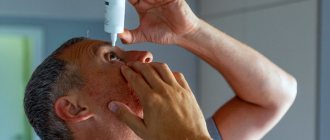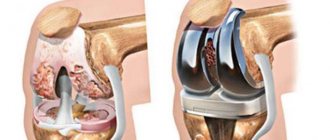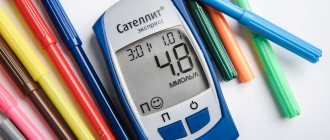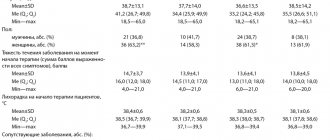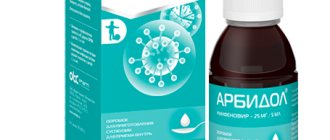T. A. Nefedova chief physician of the CrocoDent clinic, Russia, Moscow
Statistics from 20 years of use of the anesthetic Sevoran in various countries allows us to assert that today it is the safest and most harmless drug for general anesthesia. In the European Union, USA, Japan and other civilized countries of the world, no medical procedures are carried out forcibly on children. A doctor who treats forcibly will be deprived of his license, and parents of parental rights.
In our country, parents still have a choice: to hold their child and forcefully try to treat teeth or to cure everything “in a dream”: quickly, efficiently, and most importantly without pain and fear, giving their baby not only healthy and beautiful teeth, but also fearless visit to the dentist for life.
The latest generation anesthetic “Sevoran” is the best that modern science can offer for safe treatment during sleep, therefore general anesthesia is carried out with this drug. When treating teeth under anesthesia, pediatric dentists first of all pay attention to the safety of the little patient.
The drug "Sevoran" creates psychological comfort for the child:
- sleep “from the first breath”;
- nice smell;
- waking up immediately after the supply stops;
- removal of “Sevoran” from the body occurs quickly and without a trace;
- There are practically no allergic reactions.
STORIES
Content
In modern dentistry, anti-stress treatment methods have been successfully used for a long time, which is especially important for children. In particular, Sevoran anesthesia allows children to avoid anxiety and pain and treat their teeth with comfort. After waking up, the child will not experience unpleasant sensations, he will not be disturbed by unpleasant memories. The absence of psychological trauma will save the child from dental phobia and will lead to the fact that in the future he will consult a doctor as soon as he feels some kind of problem with his teeth, and will not wait until the last minute, when the tooth most likely cannot be saved.
Interaction with other drugs
This harmless drug for mask anesthesia is excellent for adults and children; when using it, patients do not have to endure injections or lie under a drip. However, this type of anesthesia has a number of limitations and side effects.
- Since even light anesthesia affects the speed of the reaction, after using Sevoran you should not immediately sit behind the wheel and do work that requires increased concentration.
- Rare cases of side effects have been recorded in the form of a transient increase in blood glucose levels, pressure surges, tachycardia, headaches and muscle pain - they occur with existing concomitant diseases.
- Within one to two days after using the drug, minor mood swings may be observed that go away on their own.
Sevoran anesthesia for children in dentistry
When treating children's teeth, Sevoran anesthesia has actually become the standard. Its use provides invaluable benefits.
Complete security. Sevoran is approved for use in children over one year of age. This drug has been well tested, tested, and has been used for quite some time. It does not cause severe side effects, does not place a large burden on the body, and no toxic metabolites are formed when administered. It only works as long as it is supplied through a special mask; as soon as the doctor turns off the supply, the effect stops, and after a few minutes the patient wakes up, except in those cases when the medicated sleep turns into normal and the child no longer sleeps under the influence of the drug, but on its own.
Perfect efficiency. Under the influence of the drug, the child does not experience any discomfort, pain, anxiety - he sleeps soundly, and the doctor carries out treatment at this time. Sevoran has not only a sedative and hypnotic effect, but also an analgesic effect, so it is used even in cases where local anesthesia cannot be used (for example, due to allergies) or may be insufficient (for extensive dental procedures).
Ease of administration. Sevoran is an inhalation drug that is administered through a breathing mask. In this case, no injections or intravenous injections are necessary.
Hypoallergenic. There is no allergy to this drug. It is also used in cases where the patient has allergic reactions to other anesthetics.
The Dental Master clinic has the necessary licenses for anesthesiology and resuscitation, allowing you to perform treatment under anesthesia. We also have all the necessary modern equipment and highly qualified doctors. During treatment, the child is under constant supervision of an anesthesiologist, who, using special equipment, monitors the baby’s condition and will take appropriate measures if any changes occur.
Dosage
Anesthesia with Sevoran is selected individually for each patient.
Thus, during surgery, anesthesia is administered using a vaporizer. As a rule, anesthesiologists use special devices calibrated specifically for this drug.
The dosage is selected individually in each specific case. Titration continues until the desired effect occurs, while taking into account the patient’s clinic, his medical history, concomitant diseases and age. After the end of the Sevoran administration, the patient is administered a drug from the group of barbiturates or another type of anesthetic, which is designed for intravenous administration in order to obtain deep anesthesia. Typically, oxygen and nitric oxide or Sevoran together with oxygen are used for these purposes.
A small amount of Sevoran anesthesia before surgery allows you to achieve the stage of deep sleep in a couple of minutes, and this applies to both adult patients and children. With this anesthesia, a quick recovery from the anesthesia state without the use of any additional drugs is very characteristic: patients rarely complain of long-term depression after this, thinking functions are restored very quickly, people do not feel any discomfort at the site of the operation and injection.
In addition, anesthesia with Sevoran provides the necessary level of anesthesia. The concentration is selected in the range from 0.55 to 3%, the drug is administered together with nitric oxide.
In case of overdose, the patient may experience the following symptoms:
- The activity of the central nervous system changes.
- Hypotension.
- Vascular collapse.
- Cramps.
- Stopping breathing.
If such symptoms appear, then you urgently need to stop administering the drug, install a clean breathing tube and begin artificial ventilation of the lungs with oxygen, monitor the work of the heart, if you need to administer drugs to maintain it.
The medication is used by inhalation.
The administration of Sevoflurane is stopped, measures are taken to maintain adequate functioning of the cardiovascular system, controlled or assisted ventilation of the lungs is started, and the patency of the respiratory system is maintained.
Anesthesia Sevoran is an anesthetic agent that is often used in modern medicine. This medicine is intended for anesthesia performed using the inhalation technique. As an anesthetic substance, Sevoran is used for short operations or for dental treatment of young children.
In what cases is mask anesthesia with Sevoran used in children?
There are specific indications for the use of Sevoran for children in dentistry:
- age 1-3 years – at this time it is difficult for a child to sit still in the dentist’s chair, which makes treatment difficult, and in some cases makes it impossible,
- panic fear of the dentist, which cannot be eliminated in other ways,
- allergy to local anesthetics, which will not allow for quality treatment,
- various diseases, as well as developmental features that do not allow the doctor to establish contact with the child,
- a large amount of dental intervention requiring prolonged treatment or serious impact (for example, tooth extraction).
In each specific case, the pediatric dentist of our clinic discusses in detail the prospects for treating the child under anesthesia with the parents, talks about all the nuances, explains the advantages and features of the technique, and invites an anesthesiologist for consultation.
Premedication for children before visiting the dentist
Lazolvan for inhalation for children: instructions. feedback on use
In order to facilitate anesthesia and reduce risk factors for side effects and complications, one or more medications are used that are taken before dental procedures, which is called premedication. As you know, pain has 4 main components:
- psycho-emotional,
- vegetative,
- motor,
- sensory.
The sensory component of the pain reaction is removed by a local anesthetic (lidocaine, benzocaine and articaine), removing sensitivity at the site of intervention, but the psychoemotional, autonomic and motor components of pain must be reduced or removed before local anesthesia is administered. The psycho-emotional component can be reduced through persuasion and suggestion. However, you should still use medications that have a sedative effect. They are directly shown if it occurs:
- Epilepsy,
- Bronchial asthma,
- Diabetes,
- Thyroid dysfunction
- Insurmountable fear of treatment,
- Tendency to hysteria
- Emotional stress
- Increased skeletal muscle tone, etc.
15-20 minutes before treatment, an anxiolytic drug is prescribed - chlordiazepoxide, better known to everyone as diazepam, Elenium, Valium, Relanium, Sibazon, Seduxen, Napoton, Radepur 10 or chlozepid. It can be taken by children from 4 years of age in a dosage of 5 to 10 mg, from 7 years of age - 10-20 mg, from 15 to 18 years of age - 20-30 mg per day in 2-3 doses. It is advisable to start taking diazepam the day before your visit to the dentist, and take the last dose required 15 minutes before the visit.
Also, at home, you can prepare a decoction from the roots of valerian and motherwort and drink it a day or three before going to the dentist in accordance with the doctor’s instructions and the instructions on the collection packaging.
In addition to sedative premedication, you should definitely take an antihistamine, preferably a 4th generation, this could be: cetirizine (allowed from the age of 6 months), cyproheptadine (from 6 months), loratadine (from 2 years) to prevent possible allergic reactions.
Sedation
Due to the fact that premedication is not always effective, and sometimes is impossible due to lack of time, in modern pediatric dentistry they resort to a method of preparing for surgery, such as sedation.
Sedation can be deep - with entering a state of sleep and respiratory depression, and superficial - when the child is able to maintain contact with the dentist and follow his instructions, while breathing remains smooth. In pediatric dentistry, superficial sedation is used.
Sedation is carried out by inhalation, immediately before the start of dental procedures, using a mixture of nitrous oxide (N2O) and oxygen (O2) - ZAX. At the beginning of sedation, the child receives pure oxygen through a mask, to which nitrous oxide is gradually mixed over about 15 minutes. Although the permissible concentration of nitrous oxide in the mixture can reach 70%, for children it is usually stopped at 30%, the remaining 70% is medical oxygen.
Sedation with a mixture of ZAX causes a feeling of relaxation, good mood, calm, and slight drowsiness in a small patient. The child sees and hears his parents and the dentist, but does not experience fear or anxiety.
The supply of a sedative mixture and the evacuation of exhaled gases from the mask are carried out using special electronic-automatic devices. By the time the necessary dental procedures are completed, the proportion of nitrous oxide in the mixture decreases inversely and the proportion of oxygen increases to 100%, after which the inhalation mask is removed. The effect of nitrous oxide disappears without a trace within 5–10 minutes, evaporating from the child’s lungs unchanged.
Nitrous oxide has a certain analgesic effect, but it is not enough for dental operations, so local anesthesia is additionally administered.
Sedation with a mixture of ZAX is carried out starting from the age of four years, when contact can be established with him. The main task of the dentist is to persuade the little patient to independently apply the mask to the breathing apparatus; for this purpose, special aromatic, delicious-smelling masks are used, which make the child want to inhale “laughing gas” without forced action from the parents and the doctor.
Modern private clinics go further on the path to stress-free treatment of children - they show cartoons during sedation, tell fairy tales, etc.
How harmless is ZAC sedation? Judge for yourself: in pediatric dentistry in all developed countries, sedation is used in up to 80% of cases, so we can safely say that this is a proven method.
Treatment of baby teeth with sevoran
Parents often ask themselves the question: is it worth treating a child’s baby teeth if they are already falling out? There is some reason for this - indeed, to waste energy, force the child to undergo not very pleasant treatment procedures only so that the cured tooth falls out after a short time and a permanent one grows in its place. But the thing is that replacing baby teeth with permanent ones is a long process. On average it lasts approximately 10 years. But it is not at all uncommon for individual baby teeth to survive until the age of 20 or even 30 years. Imagine that this particular baby tooth will fall out in a child only after 10 years. Will he suffer all these years? And then, even if the baby tooth does not hurt much, but simply collapses, what will the child chew on until his permanent tooth erupts?
Simply put, it makes no sense to treat only those baby teeth that are already loose and close to falling out. But those that are still holding up well can and should be treated.
Treatment of baby teeth with Sevoran will be completely painless and comfortable. The method is no different from the treatment of permanent teeth.
Mode of application
Price: 250 ml – 8720 rub.
The use of Sevoran, according to the instructions for use, is carried out using a special device, configured and calibrated in such a way that it is possible to accurately measure the dosage.
Premedication
The dosage of the inhalation solution is determined by the anesthesiologist according to the diagnosis and condition of the patient.
Induction
After determining the dosage, Sevoran is administered, constantly checking the patient’s response. If necessary, it is possible to increase the amount of the drug. It is also allowed to first administer short-acting barbiturates or other anesthetic agents administered intravenously, and then use Sevoran inhalations. To achieve induction, the drug can be mixed with oxygen alone or administered in a mixture with nitrous oxide.
When using Sevoran in a concentration of less than 5%, general anesthesia in adult patients occurs in less than 2 minutes.
Maintenance of anesthesia
To provide anesthesia during surgery, a solution containing ½-3% sevoflurane with or without dinitrogen oxide is used. The minimum alveolar concentration of the drug is reduced in accordance with age, as well as when used simultaneously with dinitrogen oxide. Average MAC values for 80-year-old patients are ½ of the dosage for 20-year-old patients.
Recovery from anesthesia
Awakening from sevoflurane anesthesia usually occurs within a short time, so early use of pain medication after surgery may be required. Due to the high risk of renal failure in patients during the postoperative period, it is necessary to ensure normal diuresis.
Special Notes
The administration of Sevoran can only be carried out by an experienced specialist who has undergone appropriate training, in departments equipped with the necessary equipment for mechanical ventilation, resuscitation, and oxygenation.
During the administration and maintenance of anesthesia, it is necessary to constantly monitor ECG readings, blood pressure, the intensity of oxygen intake, as well as the pressure of carbon dioxide during exhalation.
When maintaining anesthesia, it is necessary to remember that increasing the concentration of anesthetic leads to a dose-dependent blood pressure.
Hemodynamic disturbances after Sevoran may occur earlier than after the use of other anesthetics, since the active substance does not dissolve in the blood.
The amount of Sevoran coming from the vaporizer must exactly correspond to the dosage determined by the anesthesiologist. Inhalation administration should only be carried out using equipment specifically designed for sevoflurane.
After the anesthesia wears off, patients are under medical supervision until they are transferred from the intensive care unit.
During pregnancy and breastfeeding
Testing of the drug on the reproductive functions of laboratory animals did not reveal any dangerous effects on the gestating offspring. Similar studies have not been conducted in humans, so there is no data on how sevoflurane works during pregnancy. For this reason, Sevuran can be used during pregnancy only for health reasons.
When using inhalation anesthesia, it must be taken into account that the active substance relaxes the uterine muscles, which can cause bleeding. When prescribing, you need to take this feature into account and make an informed decision about the need to use Sevuran for anesthesia in pregnant women.
It is not yet known whether sevoflurane and its derivatives pass into breast milk or not. Due to the lack of documented experience with use, it is undesirable to combine the drug with lactation. Breastfeeding women should stop breastfeeding 2 days before using the drug.
Method of dental treatment under anesthesia Sevoran for children
Sevoran is administered in two stages - the initial administration through an oral-nasal mask, and then, when the child has fallen asleep (literally after 2-3 breaths), a laryngeal mask is placed, through which the patient breathes during treatment. Local anesthesia can only be used in cases where it is necessary to extend the analgesic effect for a period after treatment and after the end of anesthesia (for example, when several teeth are removed). Inhalation anesthesia with Sevoran is effective only during its introduction into the body. Once the feed stops, most babies are usually awake within 20 minutes.
Children cope with recovery from anesthesia differently, because they themselves are all different, with their own characteristics of the body. Sometimes there may be a short-term lack of coordination of movements, in some cases - a state of excitement. Some people experience dizziness and nausea. Some children may be fussy after waking up - this may be caused by unusual sensations.
Our clinic has a separate room where the child can wake up on his own, naturally in the presence of his parents. Oxygen was supplied to this room to speed up the removal of the remnants of anesthesia from the child’s body, and an anesthesiologist monitored the awakening of the little patient.
Special instructions for use
The medication can only be used by medical specialists who have the skills to administer general anesthesia in specialized departments equipped with devices for mechanical ventilation, restoring the patency of the respiratory system, resuscitation, oxygen therapy. The concentration of the active substance that comes from the evaporator must be accurately known.
The dose of Sevoflurane is selected on an individual basis, assessing the patient’s overall response. An increase in concentration may be accompanied by respiratory depression and increased severity of arterial hypotension.
Cases of QT prolongation on the ECG have been reported (less often there was a connection with tachycardia of the “pirouette” type, extremely rarely with a fatal outcome). The medication is used with caution in patients with these complications. Ventricular arrhythmias have been reported in pediatric patients with Pompe disease.
Use with caution in persons suffering from mitochondrial diseases. As the concentration of the active substance increases, a dose-dependent drop in blood pressure is observed, which may be associated with the depth of general anesthesia. In such cases, it is recommended to reduce the concentration of the anesthetic administered.
To prevent ischemic changes in the myocardium in people suffering from coronary artery disease, it is necessary to maintain stable hemodynamics. Before transfer to a specialized department after recovery from anesthesia, additional observation of the patient by specialists of the appropriate profile is mandatory.
In pediatric practice, cases of increased potassium concentration in the blood have been reported, which provoked arrhythmias and could cause death. At risk are young patients with Duchenne muscular dystrophy and various neurological diseases that occur latently or overtly.
Differential diagnosis of malignant hyperthermia is based on the absence of symptoms associated with muscle metabolism, as well as muscle rigidity. When diagnosing neuromuscular pathology, antiarrhythmic measures and procedures to relieve hyperkalemia are carried out. Patients recovering from general anesthesia should be assessed by specialists before transport.
Sevoran cannot be used independently at home. This drug should be administered, the dosage adjusted, and the patient’s condition monitored only by anesthesiologists, preferably those who have experience in performing general anesthesia.
To administer inhalation anesthesia, especially for the drug Sevoran, you need to use calibrated evaporators. It is also necessary to inform the patient that after anesthesia he cannot drive for some time or work with any moving mechanisms, because concentration may be impaired.
Contraindications to the procedure
In order for dental treatment under Sevoran to be completely safe, it is important to take into account the patient’s health characteristics and not use this type of anesthesia if there are contraindications, which include:
- individual intolerance to this drug (very rare, but does occur),
- hypertension and increased intracranial pressure,
- malignant hyperthermia.
In addition to absolute contraindications to Sevoran anesthesia for children, there are factors in the presence of which this drug should be prescribed with caution, taking measures to relieve possible complications. These factors include:
- cardiovascular diseases (CHD, etc.),
- chronic liver and kidney diseases,
- neuromuscular disorders,
- tendency to seizures,
- simultaneous use of calcium channel blockers (nifedipine, cordipine, verapamil), alpha and beta sympathomimetics (isoprenaline, epinephrine, norepinephrine).
Side effects
Sevoran anesthesia facilitates the rapid introduction of the patient into general anesthesia, as well as a rapid recovery from it. The severity and depth of anesthesia varies depending on the level of the active substance Sevoflurane in the mixture inhaled by the patient.
During induction of anesthesia, excitation is recorded, which is slightly expressed. Excessive stimulation of the nervous system, hypersecretion of tracheobronchial secretions in the bronchial tree and irritation of the upper respiratory tract are not observed. Characterized by a decrease in blood pressure and suppression of respiratory function, which are dose-dependent.
Studies conducted on children have shown that when administered with mask anesthesia, Sevoflurane causes coughing less frequently compared to halothane. Registration of myocardial infarction and ischemic changes with Sevoflurane is observed less frequently than with Isoflurane. The arrhythmogenic effect of Epinephrine when using Sevoflurane and Isoflurane is the same, but slightly higher than when using Halothane.
The active substance has virtually no effect on the level of intracranial pressure.
Sevoflurane, like other drugs for inhalation anesthesia, can provoke suppression of respiratory and cardiac function (it is dose-dependent). In most cases, negative reactions are moderate, mild or transient.
Quite often, after surgical treatment under anesthesia, patients report vomiting and nausea, which can be caused by the patient’s reaction to surgery or the effect of other medications administered intraoperatively.
Possible adverse reactions:
- tachycardia;
- hives;
- dizziness;
- agitation;
- bradycardia;
- cough;
- laryngospasm;
- drowsiness;
- drop/rise in blood pressure;
- breathing problems;
- pseudoanaphylactic reactions;
- nausea;
- increased salivation;
- fever;
- chills;
- vomit;
- hypersensitivity;
- dystonia;
- dyspnea;
- convulsions;
- heart failure;
- bronchospasm;
- chest discomfort;
- hepatitis;
- skin itching;
- liver necrosis;
- malignant hyperthermia;
- contact dermatitis;
- swelling of the face.
Sevoran is compatible with muscle relaxants, aminoglycosides, blood products, hormones and their synthetic analogues, antimicrobial agents, Epinephrine, cardiovascular drugs (efficacy and safety have been proven).
Are there any consequences after using Sevoran in children during dental treatment?
If safety rules are followed, the effects of Sevoran in children are almost always mild (when compared with other types of anesthesia) and short-lived. Mainly:
- dizziness, drowsiness, lethargy - goes away within half an hour,
- nausea and vomiting (in 2-3 patients out of 100),
- increased excitability, moodiness (in about 15 small patients out of 100), mostly due to long abstinence from food and unusual sensations,
- increased temperature (as a rule, this is a consequence of serious dental procedures - tooth extraction, trauma to the mucous membrane),
- unpleasant or painful sensations - again due to dental procedures.
All these possible effects do not pose a threat to the baby’s health, so they should not be considered decisive when planning treatment. Of course, if there is an opportunity to treat teeth without anesthesia, you should take advantage of it. In situations where anesthesia remains the only remedy, it should not be neglected. Dental treatment for children under Sevoran anesthesia is completely harmless and safe, which is confirmed by numerous medical studies, as well as the large-scale use of this type of anesthesia in dental clinics in many countries in Europe, America, Israel, and Russia.
As we have already said, Sevoran does not have a serious effect on the central nervous system, it dissolves poorly in the blood, does not irritate the respiratory tract, does not leave toxic metabolites (decomposition products), and has virtually no effect on blood counts and metabolism. Within a few minutes after stopping the supply, Sevoran is eliminated from the body through the lungs, and small residual amounts are excreted in the urine. All residual and side effects after cessation of anesthesia in a child quickly disappear without leaving any traces.
Release form and composition
Sevoran is available in the form of a liquid for inhalation: easily mobile, colorless and transparent (100 and 250 ml each in a dark-colored PE naphthalate bottle, closed with a special closure system (Quik-Fil) made of polyacetal/PE with a protective film cap placed on top with holographic company logos on a metallized tape; 1 bottle in a cardboard box; 6 bottles in a corrugated cardboard box with a cardboard divider).
1 bottle contains the active substance - sevoflurane (fluorinated derivative of methyl isopropyl ether) - 100 or 250 ml.
Is there an alternative to using anesthesia?
Yes, of course there is! At the Dental Master clinic, we use not only mask anesthesia Sevoran for children (or another drug for intravenous administration - propofol), but also mild sedation with nitrous oxide. The oxygen-nitrogen mixture is supplied through a nasal breathing mask. This option is much easier than anesthesia - the child does not fall asleep, but remains conscious, hears everything, understands and can respond to the doctor’s requests, but is in a calmer and more relaxed state.
This anti-stress treatment option requires local anesthesia because nitrous oxide is calming but does not have an analgesic effect. Our pediatric dentist Tatyana Vladimirovna Ermakova will do everything to calm the child, set him up in a positive mood and treat him using only nitrous oxide sedation and local anesthesia, but in some situations, the only way to properly treat a child’s teeth is anesthesia.
Reviews
The first visit to the dentist can be a daunting experience for children and their parents. In each of the clinics of the Natadent network, we have created a truly warm and comfortable environment. We welcome every feedback - you help us become better.
LEAVE FEEDBACK
Not only adult patients speak very well of the drug, but also children, who say that they breathed in the fragrant air and fell asleep, and then opened their eyes - and they were already lying on the bed, and nothing hurt them. In fact, this is exactly how Sevoran works. Reviews from parents also confirm that their children tolerate anesthesia very easily, and it does not cause any side effects or allergies. It is thanks to him that many children began to visit the dentist even more often, and all because all procedures are carried out without pain.
Adult patients also speak quite positively about their condition after such anesthesia. The most important thing is that it is carried out by a competent specialist, then everything will be fine.
Any parent strives to protect their child from unnecessary pain, so dental treatment under general anesthesia is becoming an increasingly popular service. At the same time, there are not many places in the capital where children can have their teeth treated under Sevoran.
When contacting the Natadent clinic, you can be sure that your child will be treated by a qualified specialist who will do everything to ensure that your child does not experience unnecessary pain. You can verify this by reading the reviews below, which are regularly written by our little patients and their parents.
Anesthesiologists actively discuss the drug on a thematic forum. The most frequently discussed issues are the use of Sevoran in children and its consequences. Many experts agree on one thing - the drug is easier to tolerate than its analogues, causes fewer negative reactions, and after anesthesia there are no pronounced consequences.
When used in pediatrics, the advantage of Sevoran is that the mask does not have a specific odor, which can cause negative reactions in children and complicate the administration of anesthesia. Experts speak positively about this anesthesia, considering it one of the best in its group.
How to make anesthesia as safe as possible for a child?
The safety of treatment under anesthesia depends on 2 important factors:
- How ready is the patient? It is necessary that the child be thoroughly examined before sleep treatment. Mandatory set of examinations:
- Electrocardiogram (ECG) with orthostatic test. The study is valid for 6 months
Complete blood count and hemosyndrome test (blood clotting time and risk of bleeding). Research is valid for 1 month.
- Examination by a pediatrician. The pediatrician concludes that the patient is ready for treatment under general anesthesia.
- How ready is the clinic? Dental Fantasy is the only pediatric dentistry in Russia that has received the JCI International Certificate. This means that during treatment under anesthesia, maximum safety measures are taken and the strictest protocols are observed.
- We have the most advanced equipment for sleep therapy.
Treatment of children takes place only in the operating room.
- We maintain a special sterility regime.
- We have anesthesiology teams
- Our anesthesiologists and resuscitators have all the modern capabilities to manage even the rarest complications (including MH/malignant hyperthermia).
(You can take all tests, undergo examinations and get a consultation with a pediatrician in our Fantasy pediatric clinic)
